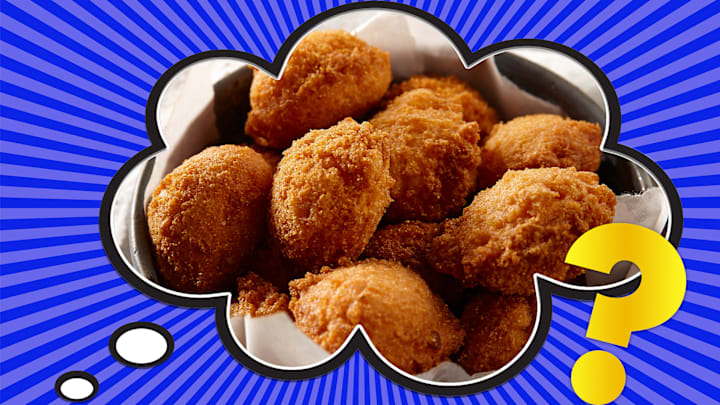Golden, crisp, and addictive, hush puppies are basically savory doughnut holes made from cornmeal batter dropped into hot oil. These days, they can be found anywhere from Carolina fish houses to Chicago shrimp shacks. But, the tasty treats weren’t always called “hush puppies,” and they weren’t always so widespread.
A Southern Speciality
Cornmeal dishes were prevalent in several Southern states, particularly among enslaved communities. It was a primary ingredient in various dishes throughout the African continent; when enslaved people were transported from Africa to the United States, they brought with them pieces of their culinary heritage.

One popular version of the dish went by an entirely different name. It traces back to South Carolina, where Romeo “Romy” Govan became famous for a simple fried bread he called “red horse bread.”
Govan was born to enslaved parents in the 1840s. He became a locally legendary cook by the 20th century; at fish fries held along the river, Govan wowed guests by dishing up spoonfuls of cornmeal batter fried in the same grease as the fish. Newspapers swooned, locals raved, and his red horse bread became a beloved speciality.
As the dish’s popularity spread, several names popped up. But only one really stuck around.
You May Also Like ...
- Why Is It Called “Monkey Bread”?
- Why Is It Called “New York-Style” Cheesecake?
- Why Is It Called a “Hot Dog”?
Add Mental Floss as a preferred news source!
The Rise of the Hush Puppy
Over time, little balls of fried cornmeal batter became known as “hush puppies.” There are a few popular myths around the name. Some say it stems from Confederate soldiers tossing fritters to their dogs, fishermen feeding yapping hounds, or cooks quieting hungry kids. One particularly popular theory posits that enslaved people trying to escape would throw the food at tracking dogs to keep them quiet.
The paper trail leads us to a different explanation, though. As Serious Eats reports, the term hush puppy already existed as slang for keeping quiet. There are also reports of hush puppy referring to gravy, particularly when eaten to silence a growling stomach.

By the 1920s and ’30s, fried cornmeal fritters were popping up at fish fries in Georgia and Florida under the new name. Tourists spread the word, magazines printed recipes, and hush puppies continued to gain popularity.
It wasn’t long before they went national. After World War II, a North Carolina entrepreneur sold a just-add-water hush puppy mix that was distributed far beyond the South. The fried cornmeal balls began showing up in many American’s diets; now, they’re a delicious side dish that’s available in restaurants nationwide.
